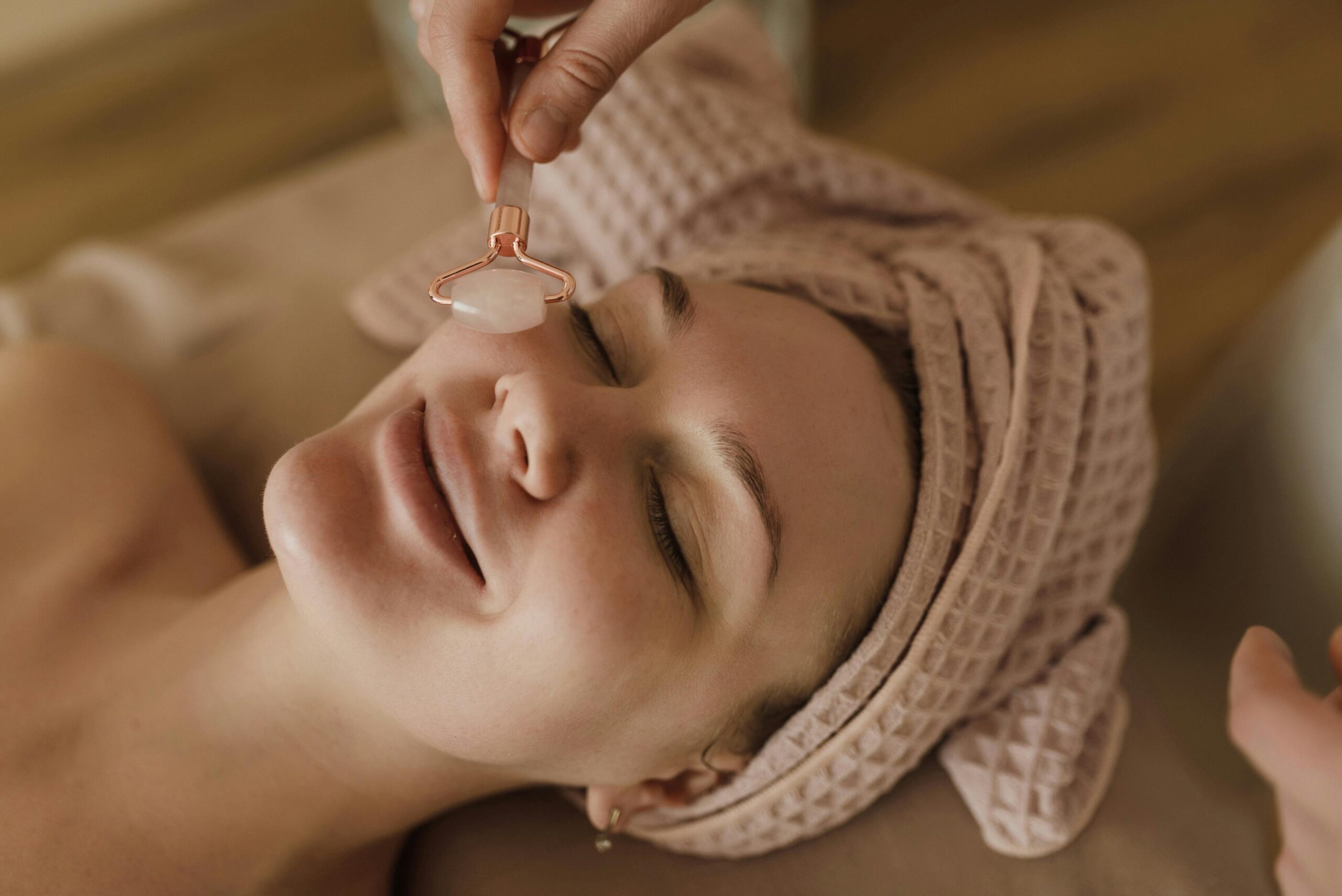
Nutrahara Blog
Nutrahara Blog
The Benefits of Mindful Menstruation
Introduction
Menstruation is a natural and essential part of many people’s lives, yet it is often shrouded in stigma, discomfort, and negative emotions. However, an emerging perspective known as mindful menstruation aims to transform this experience into a more positive and empowering one. By integrating mindfulness practices into the menstrual cycle, individuals can develop a deeper connection with their bodies, alleviate menstrual-related discomforts, and foster a sense of empowerment around their wellbeing and health. In this blog article, we will explore the multifaceted benefits of mindful menstruation, offering insights into how mindfulness can enhance one’s relationship with their menstrual cycle.
Understanding Mindful Menstruation
Mindful menstruation involves applying mindfulness techniques to the menstrual cycle, fostering awareness and acceptance of the physical and emotional changes that occur. Mindfulness, a practice rooted in Buddhist traditions, emphasizes being present in the moment and observing one’s thoughts and feelings without judgment. When applied to menstruation, mindfulness can help individuals tune into their bodies, recognize patterns, and respond to their needs with compassion and care.
Section 1: Reducing Physical Discomfort
1.1 Managing Menstrual Pain
Menstrual pain, or dysmenorrhea, affects many individuals, often leading to significant discomfort and disruption of daily activities. Mindfulness practices can be particularly effective in managing menstrual pain. Techniques such as deep breathing, body scans, and meditation can help alleviate pain by promoting relaxation and reducing muscle tension. Additionally, mindful movement practices like yoga can improve blood circulation and ease cramps.
1.2 Enhancing Body Awareness
Practicing mindfulness encourages a heightened awareness of the body, allowing individuals to identify early signs of discomfort and address them promptly. By paying attention to physical sensations, one can make informed decisions about self-care practices, such as applying heat, resting, or engaging in gentle exercise, thereby reducing the severity of menstrual symptoms.
Section 2: Emotional and Mental Well-being
2.1 Alleviating Stress and Anxiety
Menstruation can be accompanied by heightened stress and anxiety due to hormonal fluctuations and societal pressures. Mindfulness meditation has been shown to reduce stress and anxiety by promoting relaxation and fostering a sense of calm. By incorporating mindfulness into their menstrual routine, individuals can better manage emotional fluctuations and approach their cycle with a more balanced mindset.
2.2 Cultivating Emotional Resilience
Mindful menstruation encourages individuals to observe their emotions without judgment, fostering emotional resilience. By acknowledging and accepting their feelings, individuals can develop a healthier relationship with their emotions, reducing the impact of premenstrual syndrome (PMS) and other mood-related symptoms. This practice promotes self-compassion and helps individuals navigate their menstrual cycle with greater ease.
Section 3: Developing a Positive Relationship with the Menstrual Cycle
3.1 Embracing the Menstrual Cycle as a Natural Process
Society often portrays menstruation as a nuisance or inconvenience, leading to negative attitudes toward the menstrual cycle. Mindful menstruation challenges these perceptions by encouraging individuals to view their cycle as a natural and integral part of their lives. By practicing mindfulness, individuals can develop a sense of gratitude for their bodies and the processes that sustain them.
3.2 Reducing Menstrual Shame and Stigma
Mindfulness practices promote self-acceptance and reduce feelings of shame and embarrassment associated with menstruation. By fostering a non-judgmental attitude, individuals can challenge societal taboos and embrace their menstrual cycle with confidence. This shift in perspective can lead to a more positive and empowered relationship with one’s body.
Section 4: Practical Mindfulness Techniques for Menstruation
4.1 Mindful Breathing
Mindful breathing involves focusing on the breath to anchor oneself in the present moment. During menstruation, practicing mindful breathing can help alleviate pain and reduce stress. By taking slow, deep breaths and paying attention to the sensations of the breath entering and leaving the body, individuals can promote relaxation and mental clarity.
4.2 Body Scan Meditation
A body scan meditation involves systematically focusing on different parts of the body, observing sensations without judgment. This practice can help individuals become more attuned to their physical state and identify areas of tension or discomfort. During menstruation, a body scan can be particularly useful in managing pain and promoting a sense of bodily awareness.
4.3 Journaling
Keeping a mindfulness journal can help individuals track their menstrual cycle, emotions, and physical symptoms. By regularly recording their experiences, individuals can identify patterns and gain insights into how their body responds to different phases of the cycle. This practice promotes self-awareness and empowers individuals to make informed decisions about their self-care routine.
Section 5: The Broader Impact of Mindful Menstruation
5.1 Empowering Personal Health
Mindful menstruation encourages individuals to take an active role in their health and well-being. By developing a deeper understanding of their menstrual cycle, individuals can make informed choices about nutrition, exercise, and lifestyle habits that support their overall health. This proactive approach fosters a sense of empowerment and autonomy over one’s body.
5.2 Promoting Menstrual Equity
By normalizing open discussions about menstruation and advocating for menstrual equity, mindful menstruation can contribute to broader social change. Challenging menstrual stigma and promoting awareness can lead to improved access to menstrual products, better menstrual health education, and more supportive policies in workplaces and schools.
Section 6: Integrating Mindful Menstruation into Daily Life
6.1 Creating a Supportive Environment
Building a supportive environment for mindful menstruation involves creating spaces and routines that promote relaxation and self-care. This might include setting aside time for meditation, using aromatherapy, or creating a calming space at home. By prioritizing self-care, individuals can better manage their menstrual cycle and enhance their overall well-being.
6.2 Engaging with a Community
Connecting with others who practice mindful menstruation can provide valuable support and encouragement. Online communities, support groups, and workshops can offer resources, shared experiences, and practical tips for integrating mindfulness into the menstrual cycle. Engaging with a community fosters a sense of belonging and reinforces positive attitudes toward menstruation.
Section 7: Overcoming Challenges in Practicing Mindful Menstruation
7.1 Addressing Skepticism and Resistance
Some individuals may be skeptical about the benefits of mindful menstruation or resistant to adopting mindfulness practices. Addressing these concerns involves providing evidence-based information, sharing personal testimonials, and highlighting the practical benefits of mindfulness. Encouraging a gradual and flexible approach to mindfulness can also help individuals overcome initial resistance.
7.2 Balancing Mindfulness with Daily Responsibilities
Integrating mindfulness into daily life can be challenging, especially for those with busy schedules. Finding small, manageable ways to incorporate mindfulness, such as brief breathing exercises or short meditation sessions, can make the practice more accessible. Prioritizing self-care and setting realistic goals can help individuals maintain a balance between mindfulness and other responsibilities.
Section 8: The Future of Mindful Menstruation
8.1 Research and Innovation
Ongoing research into the benefits of mindfulness for menstrual health continues to expand our understanding of this practice. Future studies may explore the specific mechanisms through which mindfulness alleviates menstrual symptoms and enhances well-being. Innovations in technology, such as mindfulness apps and wearable devices, can also support individuals in practicing mindful menstruation.
8.2 Cultural Shifts and Societal Impact
As mindfulness practices become more mainstream, there is potential for significant cultural shifts in how menstruation is perceived and experienced. Increased awareness and acceptance of mindful menstruation can contribute to a more inclusive and supportive society. By challenging menstrual stigma and promoting positive attitudes, individuals and communities can foster a more empowering and respectful approach to menstruation.
Section 9: Tips and Tricks for Practicing Mindful Menstruation
1. Establish a Mindful Routine
- Create a Schedule: Set aside specific times for mindfulness practices like meditation, yoga, or journaling. Consistency helps in making mindfulness a regular part of your menstrual routine.
- Start Small: Begin with short sessions (5-10 minutes) and gradually increase the duration as you become more comfortable with the practice.
2. Use Mindful Breathing Techniques
- Deep Breathing Exercises: Practice deep breathing to promote relaxation. Inhale slowly through your nose, hold for a few seconds, and exhale gently through your mouth.
- 4-7-8 Technique: Inhale for 4 seconds, hold your breath for 7 seconds, and exhale for 8 seconds. This technique helps in calming the nervous system.
3. Practice Gentle Yoga
- Menstrual-Friendly Poses: Incorporate yoga poses that alleviate menstrual cramps and promote relaxation, such as Child’s Pose, Cat-Cow Stretch, and Reclining Bound Angle Pose.
- Listen to Your Body: Avoid strenuous exercises if you’re feeling discomfort. Opt for gentle, restorative yoga practices instead.
4. Engage in Body Scan Meditation
- Daily Check-In: Perform a body scan meditation daily to check in with your body and identify areas of tension or discomfort. This helps in addressing issues promptly.
- Progressive Relaxation: Start from your toes and gradually move up to your head, focusing on relaxing each body part.
5. Keep a Mindfulness Journal
- Track Your Cycle: Note down the start and end dates of your menstrual cycle, along with any physical and emotional symptoms. This helps in recognizing patterns and planning self-care.
- Express Emotions: Use your journal to express your thoughts and feelings. This practice can help in processing emotions and reducing stress.
6. Incorporate Aromatherapy
- Essential Oils: Use essential oils like lavender, chamomile, or clary sage to promote relaxation and reduce menstrual discomfort. Add a few drops to a diffuser or a warm bath.
- Massage: Mix essential oils with a carrier oil and gently massage your abdomen to relieve cramps and tension.
7. Practice Self-Compassion
- Be Kind to Yourself: Acknowledge your feelings without judgment. Practice self-compassion by treating yourself with kindness and understanding during your menstrual cycle.
- Positive Affirmations: Use positive affirmations to reinforce a healthy and empowered mindset. Phrases like “I honor my body” or “I embrace my cycle” can be uplifting.
8. Create a Relaxing Environment
- Comfortable Space: Designate a relaxing space in your home where you can practice mindfulness. Ensure it is comfortable and free from distractions.
- Soothing Atmosphere: Use soft lighting, calming music, and cozy blankets to create a soothing environment that promotes relaxation.
9. Stay Hydrated and Eat Mindfully
- Hydration: Drink plenty of water to stay hydrated and help reduce bloating and cramps.
- Nutrient-Rich Foods: Focus on a balanced diet rich in vegetables, fruits, lean proteins, and whole grains. Avoid excessive caffeine and processed foods that can exacerbate symptoms.
10. Connect with a Supportive Community
- Join Groups: Engage with online communities or local support groups focused on menstrual health and mindfulness. Sharing experiences and tips can provide valuable support and encouragement.
- Attend Workshops: Participate in workshops or webinars on mindful menstruation to learn new techniques and connect with like-minded individuals.
11. Utilize Technology
- Mindfulness Apps: Use mindfulness apps like Headspace, Calm, or Insight Timer for guided meditations and mindfulness exercises tailored to your needs.
- Cycle Tracking Apps: Use apps like Clue or Flo to track your menstrual cycle and receive personalized insights and reminders.
12. Experiment and Personalize
- Find What Works: Experiment with different mindfulness techniques to discover what works best for you. Personalize your practice to suit your preferences and lifestyle.
- Be Flexible: Adapt your mindfulness routine based on your needs and how you’re feeling each day. Flexibility ensures that your practice remains supportive and effective.
By incorporating these tips and tricks into your routine, you can enhance your mindful menstruation practice, leading to a more positive, empowered, and balanced experience with your menstrual cycle.
Section 10: Real-Life Testimonials
1. Sarah’s Journey to Pain-Free Periods
“For years, I dreaded my menstrual cycle due to the excruciating cramps and mood swings. A friend recommended mindfulness, and I decided to give it a try. By practicing deep breathing and yoga, I noticed a significant reduction in my pain levels. The body scan meditation helped me identify tension points and address them early. Now, my periods are much more manageable, and I feel more connected to my body. Mindful menstruation has truly transformed my experience.” – Sarah, 32, Graphic Designer
2. Emily’s Path to Emotional Balance
“I used to struggle with severe PMS, and it affected my work and relationships. I started a mindfulness journal to track my emotions and symptoms throughout my cycle. This practice allowed me to recognize patterns and prepare for emotional fluctuations. Incorporating meditation and self-compassion exercises into my routine helped me manage stress and approach my cycle with a positive mindset. I no longer feel overwhelmed by my emotions, and I’ve developed a healthier relationship with my body.” – Emily, 28, Teacher
3. Ana’s Embrace of Self-Care
“Mindful menstruation has been a game-changer for me. I used to feel disconnected and frustrated with my cycle. By setting aside time for self-care and mindfulness practices, I learned to appreciate my body’s natural rhythms. Using essential oils and creating a calming space at home made a huge difference. I feel more in tune with my needs and have a newfound sense of empowerment. Embracing my cycle has improved not only my menstrual experience but also my overall well-being.” – Ana, 35, Marketing Manager
4. Priya’s Community Support
“Connecting with a community of women practicing mindful menstruation was incredibly supportive. Through online forums and local workshops, I learned various techniques like mindful breathing and yoga. Sharing experiences and tips with others helped me feel less isolated and more confident in managing my cycle. The support and encouragement from the community have been invaluable. Mindful menstruation has taught me to approach my cycle with compassion and positivity.” – Priya, 29, Software Engineer
5. Maria’s Discovery of Body Awareness
“Practicing mindfulness during my menstrual cycle has enhanced my body awareness significantly. I started with short meditation sessions and gradually integrated mindful movement and journaling. This practice helped me identify triggers for my menstrual pain and find effective ways to alleviate discomfort. I’ve become more attuned to my body’s signals and can respond to my needs promptly. Mindful menstruation has empowered me to take control of my health and embrace my cycle with confidence.” – Maria, 40, Nurse
These testimonials highlight the diverse ways in which mindful menstruation can positively impact individuals, fostering a more empowered and positive relationship with their menstrual cycle.
Conclusion
Mindful menstruation offers a transformative approach to the menstrual cycle, promoting a positive and empowered relationship with one’s body. By integrating mindfulness practices into their routine, individuals can reduce physical discomfort, enhance emotional well-being, and develop a deeper connection with their menstrual cycle. As society continues to evolve, the practice of mindful menstruation holds the potential to contribute to broader cultural shifts, promoting menstrual equity and challenging stigma. Embracing mindful menstruation is not only a personal journey toward better health and well-being but also a step toward creating a more inclusive and supportive world for all who menstruate.
Written by the Nutrahara Team
This article was prepared by the expert team at Nutrahara, which includes experienced nutrition scientists and naturopaths dedicated to advancing women’s health through natural wellness solutions. We combine scientific research with holistic practices to help you live your healthiest life. Connect with us on LinkedIn to stay updated on the latest in women’s health and wellness.







